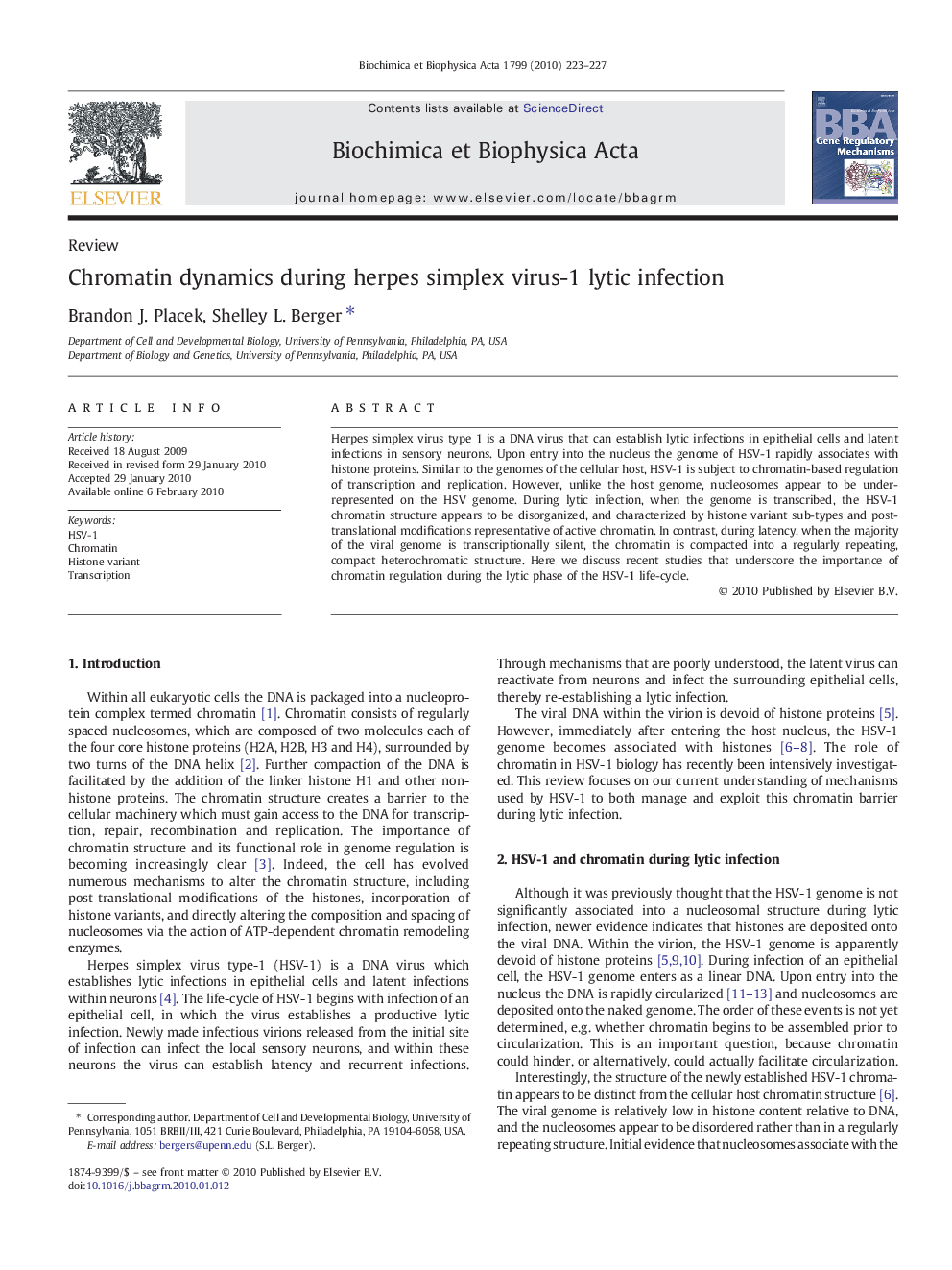| Article ID | Journal | Published Year | Pages | File Type |
|---|---|---|---|---|
| 1946849 | Biochimica et Biophysica Acta (BBA) - Gene Regulatory Mechanisms | 2010 | 5 Pages |
Herpes simplex virus type 1 is a DNA virus that can establish lytic infections in epithelial cells and latent infections in sensory neurons. Upon entry into the nucleus the genome of HSV-1 rapidly associates with histone proteins. Similar to the genomes of the cellular host, HSV-1 is subject to chromatin-based regulation of transcription and replication. However, unlike the host genome, nucleosomes appear to be underrepresented on the HSV genome. During lytic infection, when the genome is transcribed, the HSV-1 chromatin structure appears to be disorganized, and characterized by histone variant sub-types and post-translational modifications representative of active chromatin. In contrast, during latency, when the majority of the viral genome is transcriptionally silent, the chromatin is compacted into a regularly repeating, compact heterochromatic structure. Here we discuss recent studies that underscore the importance of chromatin regulation during the lytic phase of the HSV-1 life-cycle.
